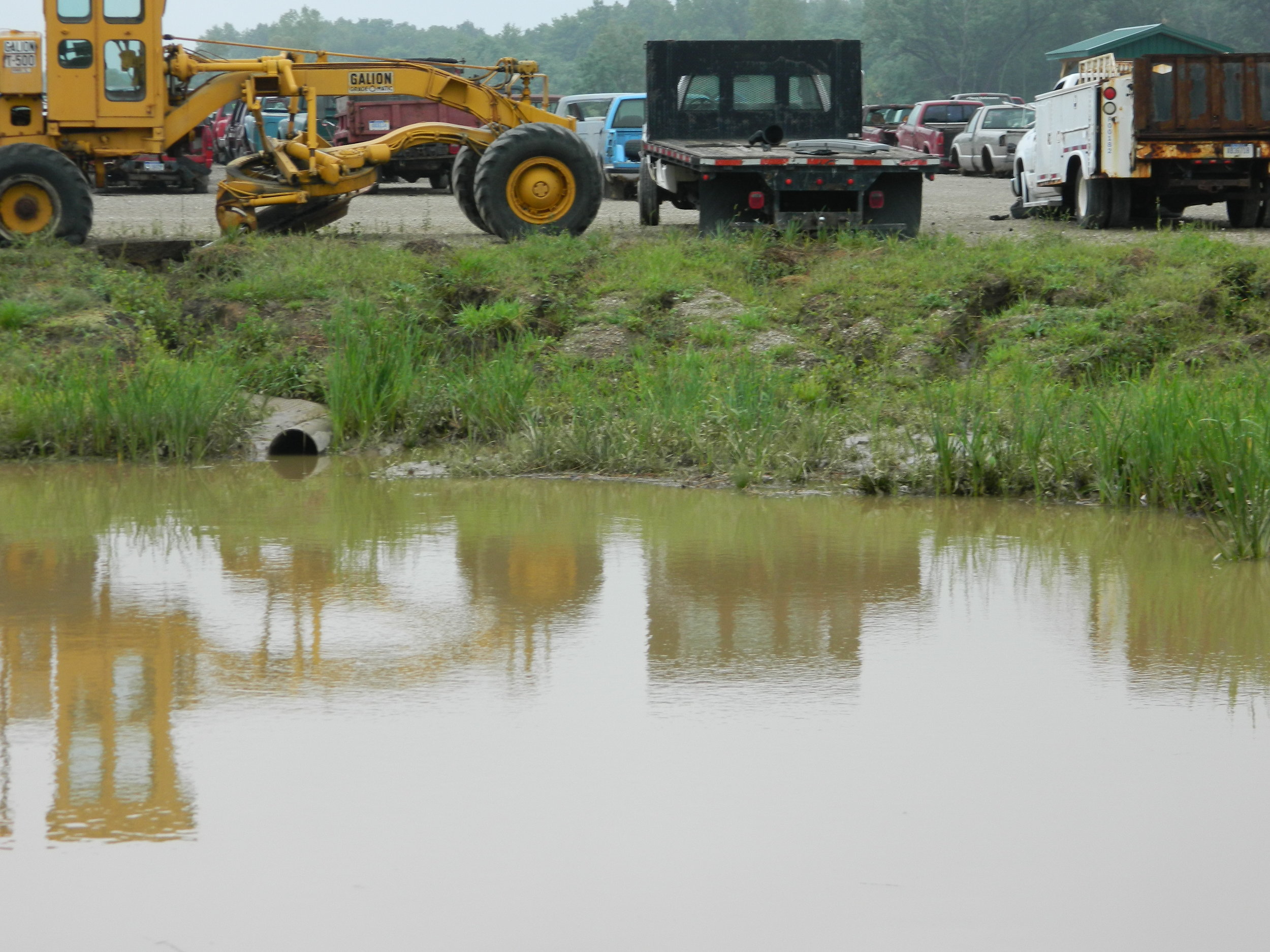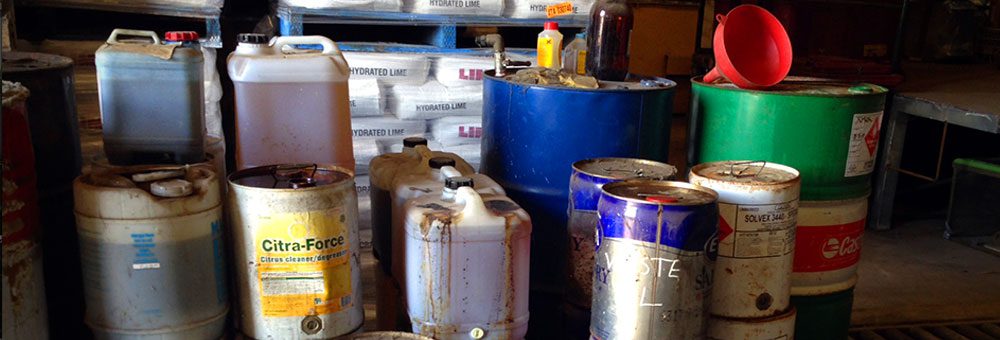Just How Fluid Waste Disposal Functions: An In-depth Review of Strategies and Technologies Employed

Overview of Liquid Waste Kind
The complexity of fluid waste types requires a thorough understanding of their features and implications for disposal. Fluid waste can extensively be categorized right into numerous types, including industrial, metropolitan, farming, and harmful waste. Each group displays unique residential or commercial properties, needing particular management strategies to minimize ecological and health and wellness dangers.
Industrial liquid waste originates from making processes and commonly contains a series of pollutants, such as hefty metals, solvents, and organic substances. Local liquid waste, largely comprising wastewater from houses and commercial establishments, consists of natural matter, nutrients, and pathogens (industrial wastewater treatment). Agricultural fluid waste, including drainage from farms, may have plant foods, pesticides, and pet waste, positioning dangers to water quality and ecological communities
Unsafe liquid waste is characterized by its poisoning, sensitivity, or potential to cause damage. Recognizing these diverse liquid waste kinds is essential for establishing reliable disposal approaches and ensuring compliance with environmental regulations.
Physical Therapy Techniques

Testing is the first action, where bigger fragments and particles are gotten rid of from the fluid waste utilizing screens or grates. This process safeguards downstream equipment from damages and makes certain smoother procedure. Complying with testing, sedimentation uses gravitational force to separate solids from fluids. In sedimentation storage tanks, much heavier fragments clear up near the bottom, forming a sludge layer, while the clarified fluid can be additional treated.
Purification is one more vital method that entails passing the liquid via permeable materials, such as sand or membranes, to record smaller fragments. This step boosts the high quality of the liquid, making it appropriate for subsequent therapy processes.

Chemical Therapy Techniques
Chemical treatment methods are important for properly managing fluid waste, particularly in resolving dissolved and colloidal impurities that physical techniques might not sufficiently get rid of. These techniques make use of various chemical representatives to neutralize, precipitate, or change hazardous compounds into less unsafe forms.
One typical approach is coagulation and flocculation, where chemicals such as alum or ferric chloride are contributed to advertise the aggregation of suspended bits. This procedure enhances sedimentation, enabling easier elimination of the resulting sludge. Additionally, oxidation processes, utilizing agents like chlorine or ozone, are utilized to break down complex natural substances and pathogens, rendering the waste safer for discharge or additional therapy.
Neutralization is another important strategy, which changes the pH of acidic or alkaline waste streams to neutral degrees, stopping possible injury to downstream systems and the environment. Additionally, advanced oxidation processes (AOPs) use mixes of oxidants and ultraviolet light to break down relentless toxins, achieving a higher degree of therapy performance.
Organic Therapy Procedures
Biological treatment processes play a crucial role in the management of fluid waste by utilizing microbes to decompose raw material and lower pollutant levels. These processes can be generally classified right into cardiovascular and anaerobic treatments, each utilizing particular microbial communities to achieve effective waste destruction.
Cardiovascular treatment involves the use of oxygen to facilitate the failure of natural materials by bacteria. This process is generally applied in triggered sludge systems, where aeration tanks offer a favorable environment for microbial development, causing the oxidation of organic pollutants. The resultant biomass can be divided from dealt with effluent via sedimentation.
In contrast, anaerobic treatment takes place in the absence of oxygen, counting on various bacteria to damage down raw material. This approach is especially advantageous for high-strength waste, as it produces biogas, a renewable resource source, while reducing sludge manufacturing. Technologies such as anaerobic digesters are frequently used in industrial and local applications.
Both anaerobic and cardio biological therapies not just lessen the environmental influence of liquid waste yet also assist in resource recuperation, making click resources them necessary components of lasting waste management methods. Their versatility, performance, and effectiveness support their extensive execution across different sectors.
Arising Technologies in Disposal
Cutting-edge approaches to liquid garbage disposal are swiftly developing, driven by developments in modern technology and an enhancing emphasis on sustainability. Among these emerging technologies, membrane bioreactors (MBRs) have actually gained traction for their capability to integrate biological therapy with membrane layer filtering, causing high-quality effluent that can be reused in different applications. MBRs make it possible for smaller sized impacts and more efficient operations compared to standard check that systems.
An additional encouraging growth is making use of anaerobic food digestion incorporated with nutrient healing modern technologies, which not only treats liquid waste however additionally creates biogas and recovers useful nutrients like nitrogen and phosphorus. This double benefit improves resource performance and reduces ecological influence.
In addition, progressed oxidation processes (AOPs) are being adopted for the deterioration of complicated organic pollutants. These approaches make use of powerful oxidants and drivers to damage down contaminants at the molecular level, using a very effective service for tough waste streams.
In addition, the combination of expert system and artificial intelligence in waste monitoring systems is enhancing operational efficiency and anticipating maintenance, leading to lowered expenses and enhanced environmental conformity. These innovations reflect a substantial shift in the direction of even more reliable and lasting fluid garbage disposal techniques.
Final Thought
To conclude, effective liquid waste disposal demands a thorough understanding of different methods and modern technologies. The assimilation of physical, chemical, and organic therapy techniques ensures the reliable management of varied waste types. Moreover, the emergence of ingenious technologies improves treatment effectiveness and advertises sustainability in waste management methods. By continuously advancing these approaches, it comes to be possible to attend to the expanding challenges connected with fluid waste, eventually contributing to environmental management and source recovery.
Fluid waste web disposal is an important element of ecological administration, needing a comprehensive understanding of different methods and modern technologies customized to various waste types. Liquid waste can broadly be categorized into several types, consisting of industrial, municipal, agricultural, and harmful waste. Agricultural fluid waste, including overflow from farms, may include fertilizers, pesticides, and animal waste, posturing risks to water high quality and communities.
Different physical treatment techniques play a critical duty in taking care of fluid waste efficiently - industrial wastewater treatment.In verdict, efficient fluid waste disposal necessitates a detailed understanding of various methods and technologies